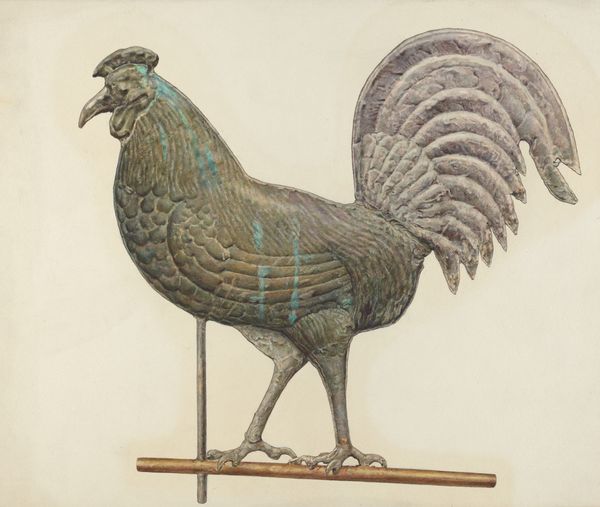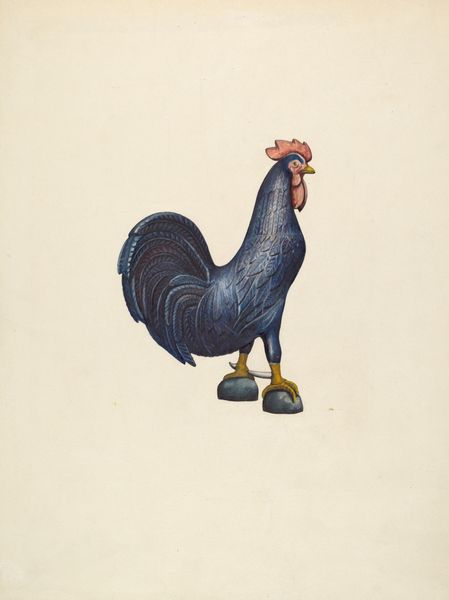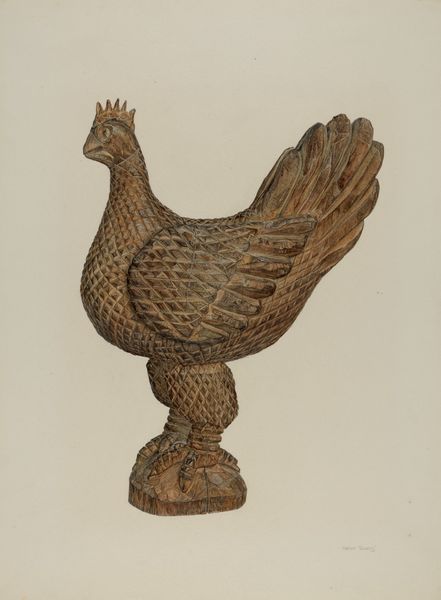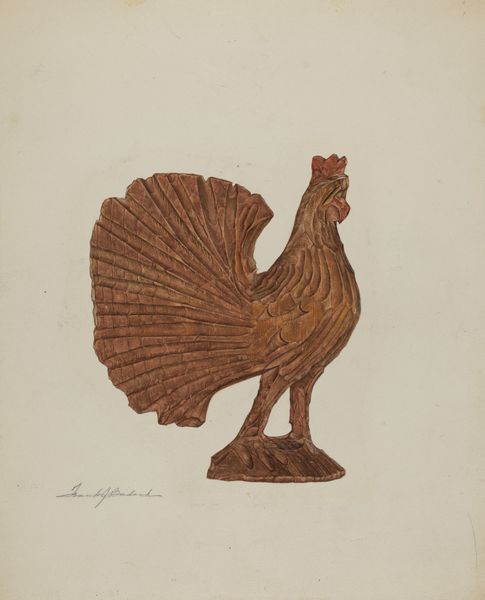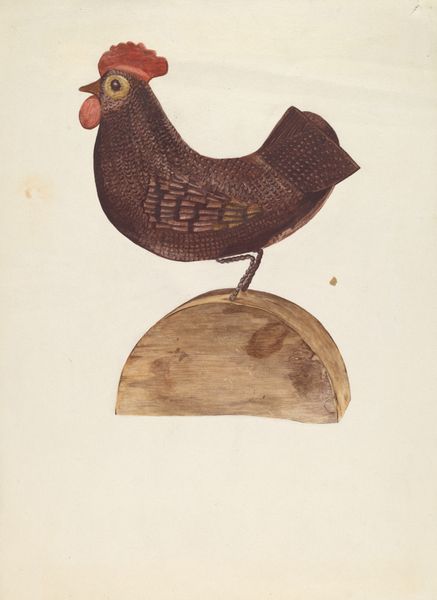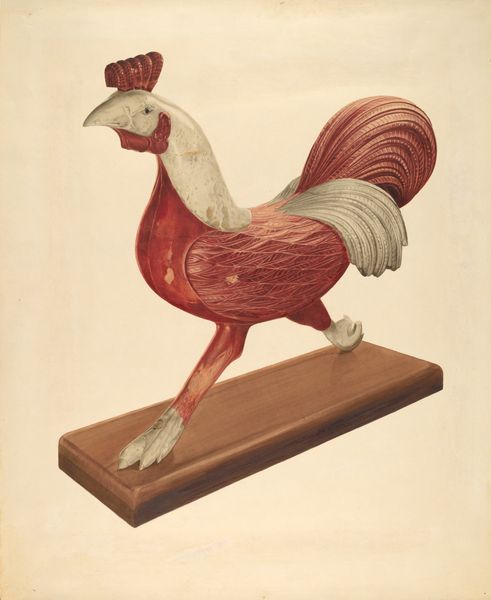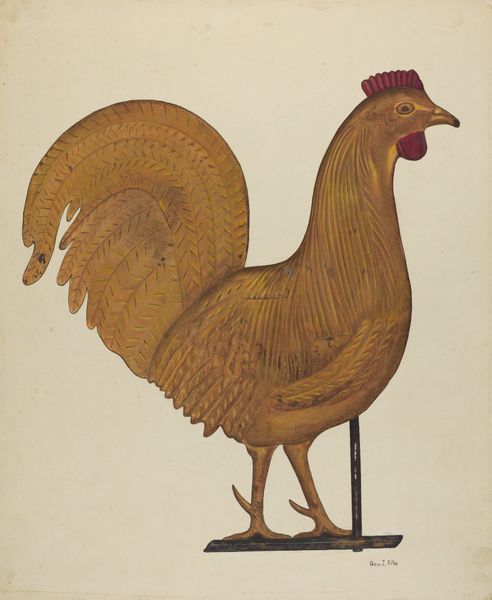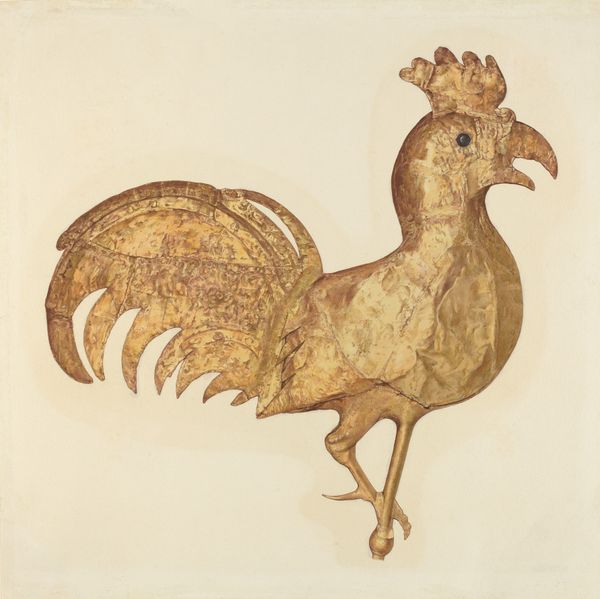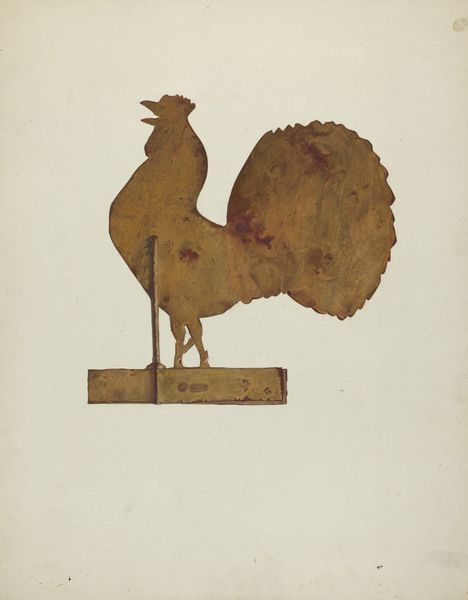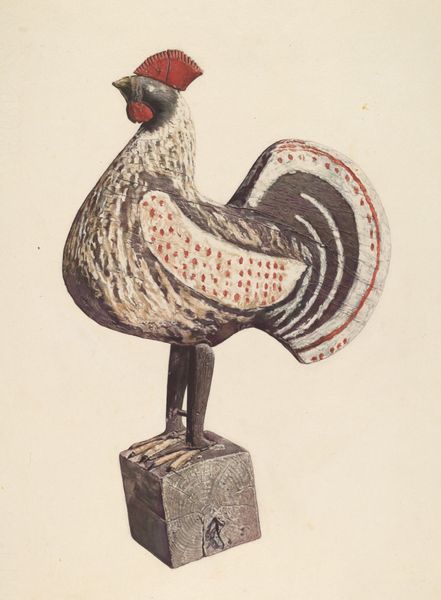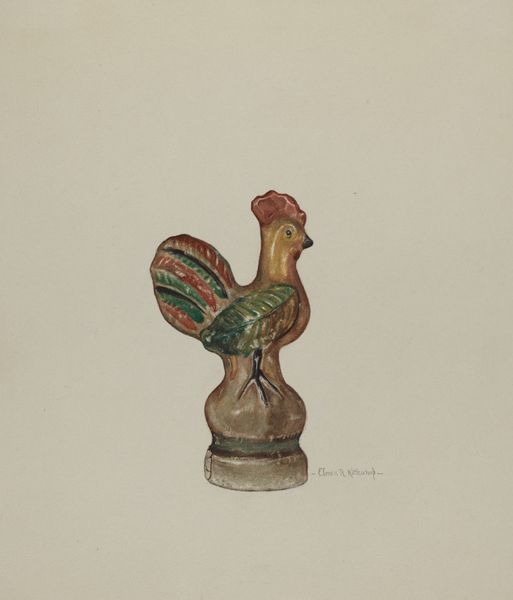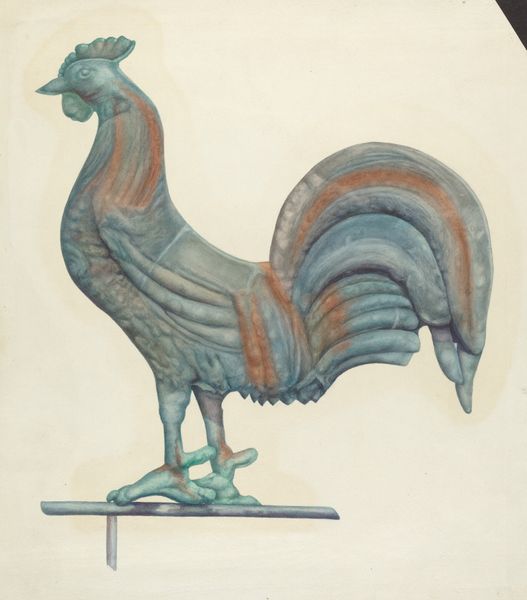
carving, sculpture, wood
#
carving
#
sculpture
#
sculptural image
#
folk-art
#
sculpture
#
animal portrait
#
wood
#
realism
Dimensions: overall: 42.2 x 34.6 cm (16 5/8 x 13 5/8 in.) Original IAD Object: 10" high
Copyright: National Gallery of Art: CC0 1.0
Editor: This delightful Rooster Woodcarving, dating back to around 1940, is attributed to Marian Page. It's such a charming, folksy piece! I'm particularly drawn to the way the artist captured the rooster's proud stance and slightly comical expression through what seems like minimal carving. What strikes you about this piece? Curator: What immediately jumps out is its embodiment of the American folk art tradition. The rooster as a symbol holds different cultural weights. In rural American society in the 1940s, what would that have represented, beyond the barnyard? Think about the values associated with the animal: vigilance, a sense of time, rural pride. Does this inform the aesthetic choices in the work? Editor: Well, given that it's from around 1940, perhaps the carving style, rooted in accessible, everyday materials, could be interpreted as a democratizing move away from more high-art sculptural traditions? The rooster, as a symbol of the working farm, seems relatable to the American public. Curator: Exactly! How might the presentation of such folk art contribute to defining an 'American' identity during that era? What political values does that rustic aesthetic promote through exhibitions and sales to different audiences? The simplicity can mask complexity, no? Editor: That's fascinating. I hadn’t considered the active role folk art played in shaping cultural identity at a national level. So this carving, more than just being a charming representation of a rooster, is part of a larger cultural narrative. Curator: Precisely. And understanding that historical context helps us to see the art differently and the ways imagery informs collective understandings of value.
Comments
No comments
Be the first to comment and join the conversation on the ultimate creative platform.

